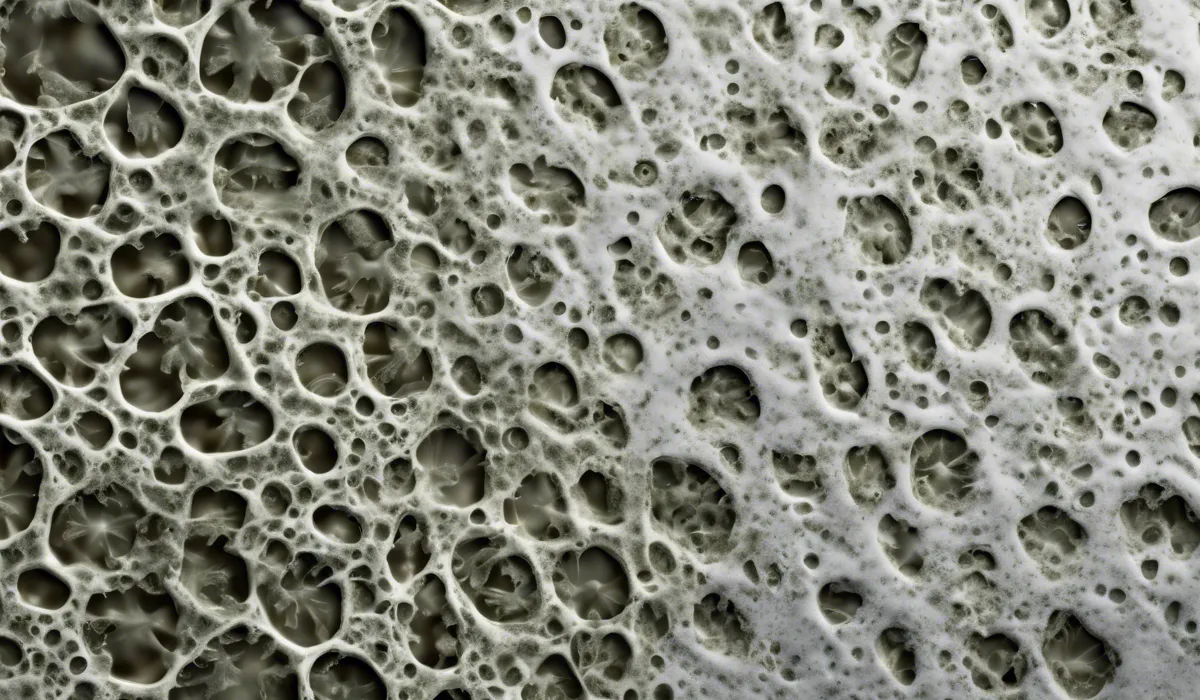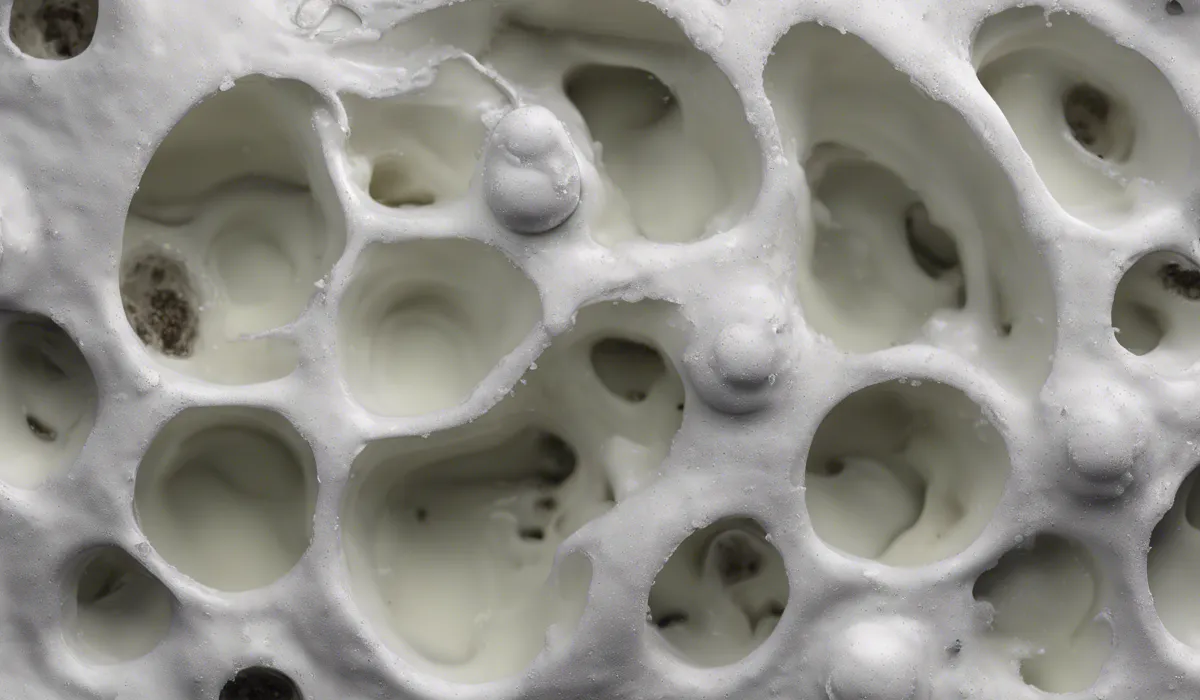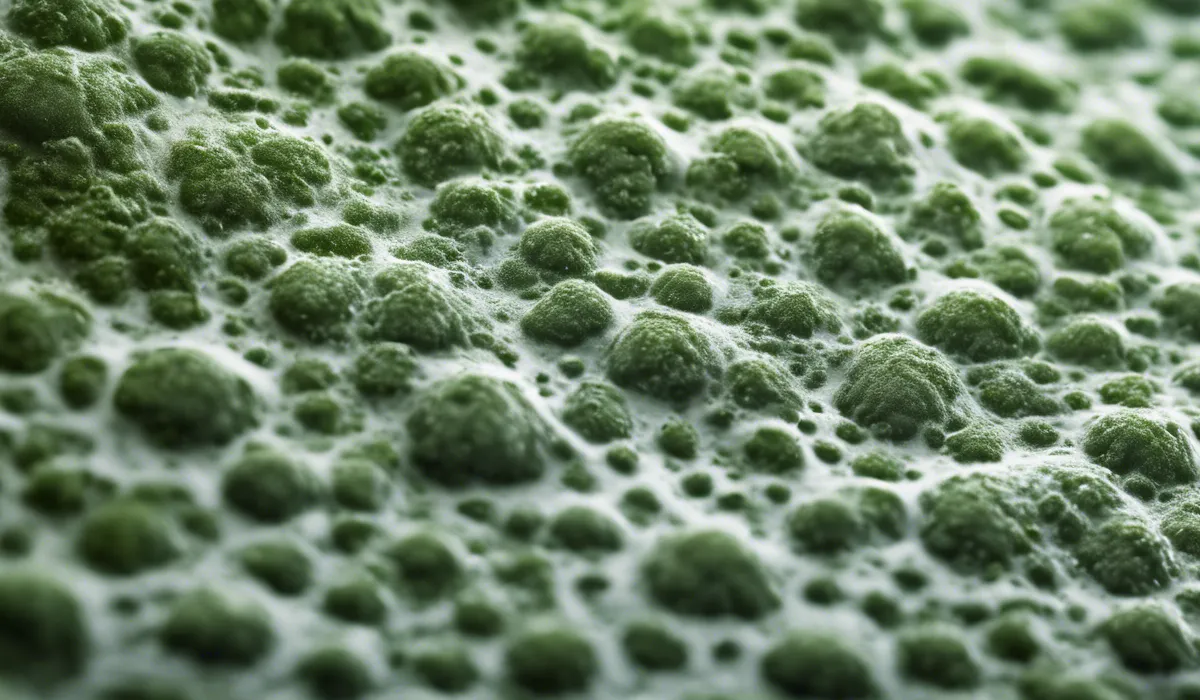Mildew is a type of mold. Both are fungi but mildew is typically white or gray and powdery while mold is usually darker and fuzzier. Mildew can turn into a more invasive mold if left unchecked, leading to potential damage and health issues.
Understanding Mildew and Mold

Definition of Mildew and Its Characteristics
Mildew is a form of fungus, often appearing as a thin, superficial coating exhibiting a powdery texture. It is commonly found on damp surfaces, organic materials, or fabrics. Mildew typically presents itself in shades of white or gray. People might notice it on the pages of old books or on bathroom walls, where it thrives in the moist environment.
Definition of Mold and Its Characteristics
Mold is a more robust type of fungus that can appear in a variety of colors, including black, green, red, or blue. Its texture is often fuzzy or slimy, indicating a more advanced fungal growth. Mold tends to grow on food and walls in homes, especially in areas that experience water damage or high humidity.
Similarities and Differences Between Mildew and Mold
While both mildew and mold are fungi, they have distinct characteristics that set them apart. They share the ability to grow in damp conditions and can cause a musty odor. However, their differences lie in their appearance and potential impact on surfaces and health. Mold is typically more invasive and can cause structural damage to homes and potentially lead to health issues if not addressed.
Conditions Favoring Mildew and Mold Growth
Mildew and mold favor warm, moist environments with poor ventilation. Bathrooms, kitchens, basements, and areas where water damage has occurred are prime locations for their growth. Organic materials like wood, paper, and fabric provide a food source that supports their development. Understanding these conditions is key to preventing mildew and mold from taking hold in your home.
The Transformation Process

Can Mildew Turn Into Mold?
While mildew is a type of mold, it cannot “turn into” mold in the sense of one species becoming another. However, if mildew is left unchecked, it can indicate that the conditions are suitable for mold to grow as well. This can lead to a more serious mold problem, as mold can be more invasive and harder to eradicate than mildew.
Lifecycle Stages of Fungi
Fungi, including mildew and mold, have a lifecycle that includes spore germination, growth, reproduction, and spread. Spores, which are like seeds for fungi, land on suitable surfaces and germinate when conditions are right. They then grow into visible colonies and reproduce by creating more spores that can spread through the air to new locations.
Environmental Factors That Influence Development
Temperature, humidity, ventilation, and available nutrients are all critical factors that influence the development of mildew and mold. High humidity and temperatures between 60 and 80 degrees Fahrenheit are ideal for fungi growth. Poor ventilation can increase humidity and decrease air quality, which also promotes fungal growth.
The Role of Spores in Reproduction
Spores play a vital role in the reproduction of mildew and mold. These microscopic particles are capable of surviving harsh conditions and can remain dormant until they land in an environment conducive to growth. They can be spread by air, water, animals, or even human activity, and are a key reason why mold and mildew can appear so quickly and spread so easily.
Prevention and Treatment

Tips for Preventing Mildew and Mold Growth
Preventing mildew and mold starts with controlling moisture in your home. Use dehumidifiers and air conditioners to maintain low humidity levels, and ensure your home is well-ventilated. Fix leaks promptly, and dry wet areas within 24 to 48 hours to prevent fungal growth. Keeping your home clean and decluttered also reduces the number of places mildew and mold can thrive.
Methods for Treating Mildew Infestations
For mildew infestations, cleaning the affected area with a mildew-killing solution can be effective. This often includes a mixture of water and either vinegar, baking soda, or hydrogen peroxide. It’s important to wear protective gloves and a mask to avoid inhaling spores or irritating your skin.
Guidelines for Mold Remediation
When dealing with mold, it’s often best to consult with professionals, especially if the affected area is larger than ten square feet. They will have the proper equipment and expertise to safely remove the mold and repair any damage it has caused. If you tackle the problem yourself, use proper protective gear and follow the Environmental Protection Agency’s guidelines for mold remediation in schools and commercial buildings.
Addressing Moisture Issues
Addressing underlying moisture issues is essential for preventing both mildew and mold. This means repairing any plumbing leaks, improving drainage around your home, and using moisture barriers in crawl spaces. Ventilation is also crucial, especially in areas like bathrooms and kitchens where water usage is high. Use exhaust fans to help reduce moisture and prevent fungal growth.
FAQs About Mildew Turning Into Mold
Can mildew develop into a more harmful type of mold?
Yes, mildew can turn into a more invasive mold if it is not treated and removed promptly.
What are the visual differences between mildew and mold?
Mildew typically appears as white or gray and powdery, while mold tends to be darker and fuzzier in appearance.
Are mildew and mold both types of fungi?
Yes, both mildew and mold are types of fungi.
Can the presence of mildew lead to potential damage and health issues?
Yes, if mildew is left unchecked, it can lead to property damage and various health issues, especially when it turns into a more invasive mold.
What should be done to prevent mildew from turning into mold?
To prevent mildew from becoming mold, it should be cleaned up promptly with appropriate cleaning agents and by controlling humidity levels.
Final Thoughts
Mildew is a light, powdery type of mold often white or gray in color. It’s less invasive than mold, which appears darker and fuzzier. However, if mildew is not properly addressed, it can escalate into a more harmful mold. This progression can cause significant damage to surfaces and potentially lead to health problems.
